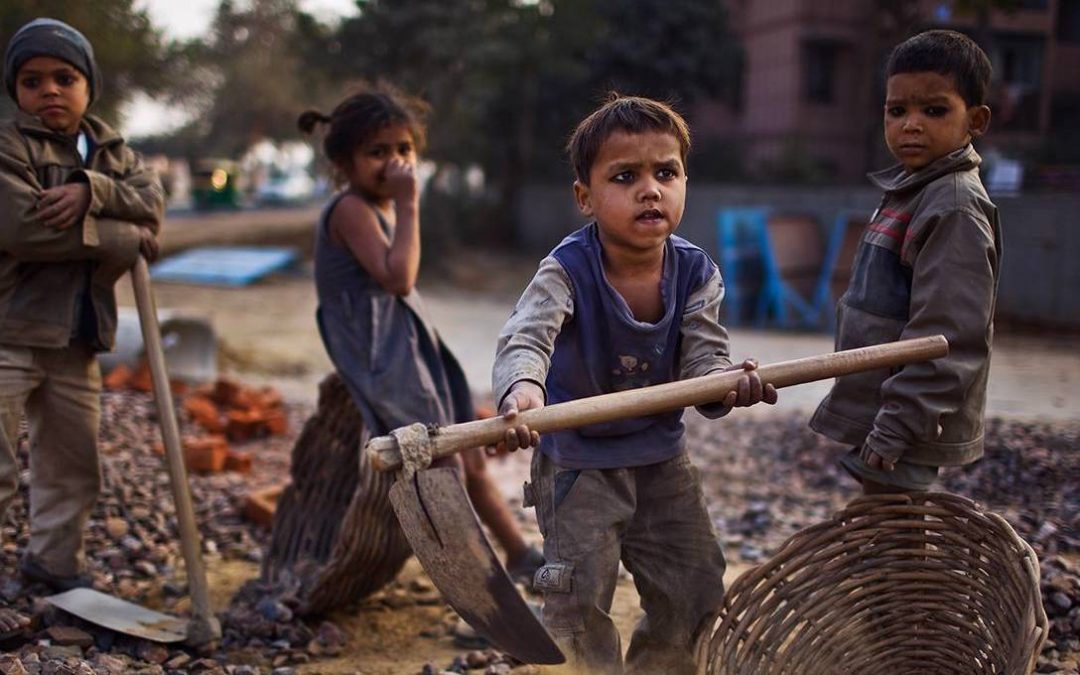NEW DELHI – For the first time in two decades, the number of child workers has increased. The shocking rise – from 152 million to 160 million worldwide, according to recent United Nations data – occurred in the four years that preceded the COVID-19 pandemic.
There can be absolutely no excuse for this. The world took its eyes off the target – namely, the promise we made to end child labor by 2025. Today, we have made a mockery of that promise. What is even more outrageous is that the increase in child labor occurred during a period when global wealth rose by $10 trillion.
The pandemic has revealed how fundamentally unequal our world has become. According to Forbes, a new billionaire has been created every 17 hours during the pandemic. Meanwhile, an estimated 200 million adults globally will have lost their jobs by the end of 2022, and the International Labour Organization warns that the COVID-19 crisis could push 8.9 million more children into child labor by then. And, given current trends, this number will only increase.
The world is thus facing not only a health crisis, but also a crisis of equality, justice, and morality. There is more than enough wealth for every child to be able to go to school instead of having to work to survive. The question is how we choose to share that wealth, and with whom. So far, we have not given our children their fair share.
But we can start to do so now. In view of the immediate crisis, world leaders must allocate to the poorest and most marginalized children their fair share of global wealth, channeling it through government budgets and official development assistance (ODA). They must also introduce and bolster targeted policies (including law enforcement and legislation aimed at ending child labor) and social protection (including health care, education, access to clean drinking water, sanitation, and housing).
Social protection must emphasize direct child benefits that can provide immediate and effective support to move millions of children out of danger and into school. Programs such as the Bolsa Família in Brazil, Midday Meals in India, and Child Grants in Zambia have demonstrated the positive impact of such payments. And child-focused social protection should complement greater investment in upholding the universal right to education and health, the rule of law, and decent work for adults – all of which remain critical to ending child labor.
Public services and welfare schemes helped to end child labor in wealthy countries decades ago. Today, social protection for citizens is a high priority in these countries and accounts for the largest share of domestic government expenditure. Extending such policies to the children most in need should thus also be a high priority in the advanced economies’ ODA budgets.
This year, the International Year for the Elimination of Child Labor, the world’s wealthiest countries should establish a well-resourced global social protection fund, with the key element being direct assistance to the most marginalized and at-risk children. The International Financing for Development Conference in September this year presents the perfect opportunity to announce this. Among G20 members, Argentina, France, and the European Union have already put their weight behind the proposal, and other countries must not miss this opportunity to stand on the right side of history. Our children do not want to listen to good intentions anymore. They need urgent and bold action now.
Less wealthy countries also have a responsibility to increase budgetary allocations to establish and strengthen social-protection floors. They should ensure that every child is protected by a safety net of education, health care, clean water, sanitation, and adequate housing. In doing so, policymakers must put children of agricultural and migrant workers first, as well as children on the move who already are at heightened risk. We must bring the last child to the front of the line.
That means understanding a child’s life, freedom, and future holistically. The perpetuation of child labor results in poor education and health care, leading in turn to intergenerational poverty. It is well established that in certain countries, every 1% increase in poverty leads to an increase in child labor of at least 0.7%.
Ending child labor is achievable. We know the solution to child labor, and we have the wealth and knowledge to implement it. What we currently lack is political will.
Today, 160 million children – kids just like yours and mine – are working at the cost of their education, freedom, and future, and millions more are at risk. But a childhood without exploitation should not be a privilege. Every child matters. As we heal and move forward from the pandemic, we must take all of them with us.
Published in Project Syndicate: https://www.project-syndicate.org/commentary/social-protection-to-end-exploitation-of-child-labor-by-kailash-satyarthi-2021-06

